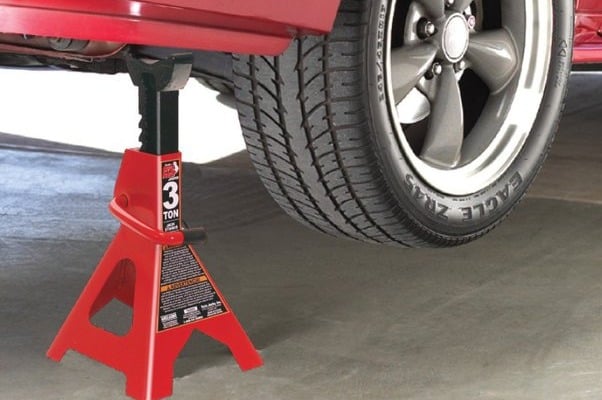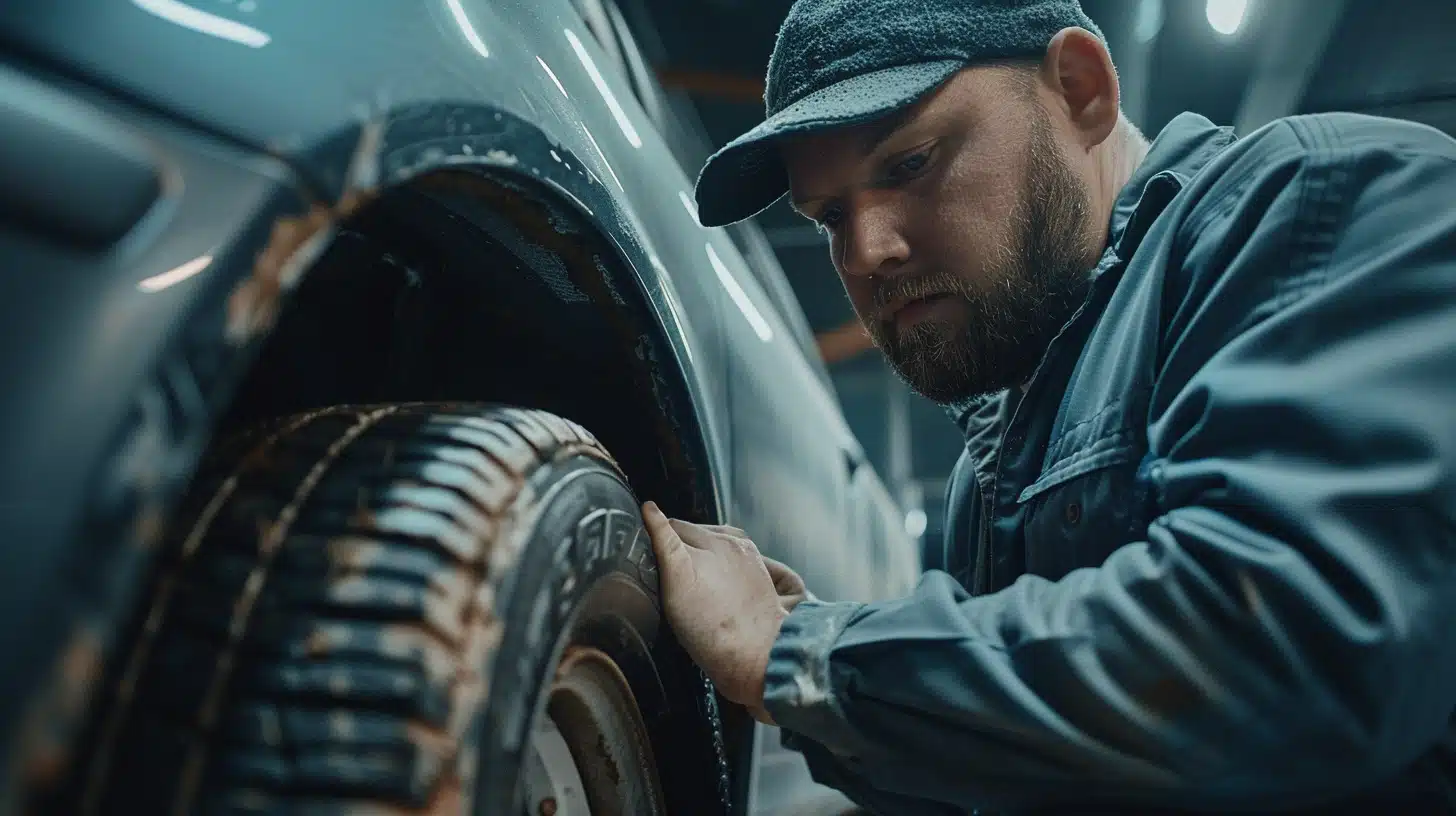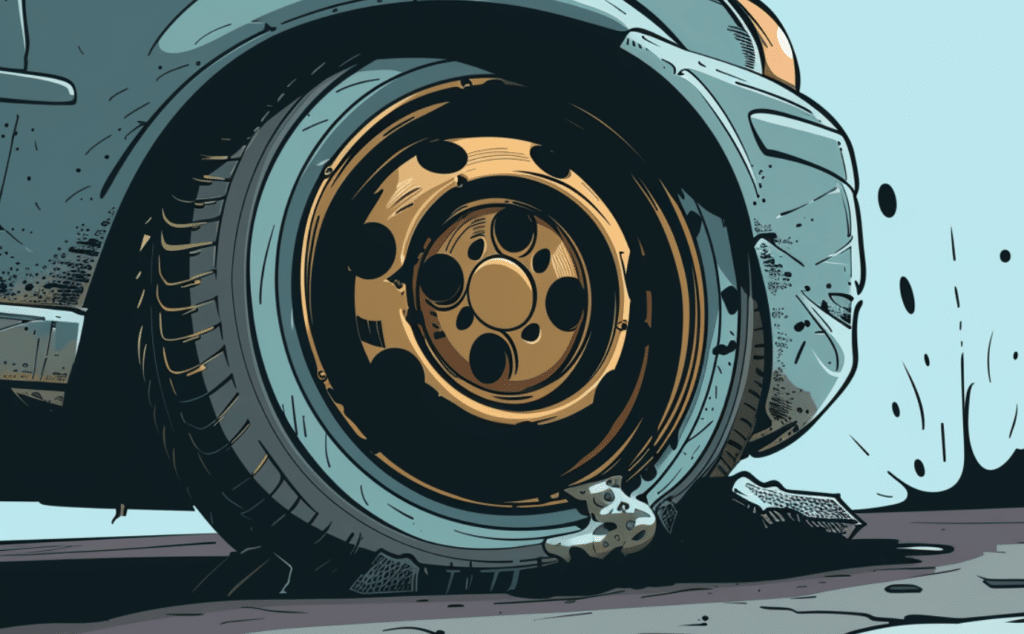Is that strange noise coming from your car’s wheels driving you crazy?
Worn-out wheel bearings can cause real pain while driving, causing vibrations, uneven tire wear, and even dangerous steering problems.
But don’t worry – you can spot the warning signs before it’s too late!
In this article, we’ll reveal the 7 telltale symptoms of a failing wheel bearing so you can keep your car running smoothly and safely.
From humming and clicking sounds to loose steering and pulling, we’ll help you diagnose the problem quickly and easily.
Don’t let a bad wheel bearing catch you off guard – read on to learn how to identify the issue and get back on the road confidently.
7 Warning Signs of a Failing Wheel Bearing
1. Unusual Noises
When identifying potential issues with your vehicle, unusual noises are often the first signs of trouble.
If wheel bearings fail, you may notice a distinct humming, grinding, or squealing sound coming from the wheels.
These noises typically get louder as your vehicle’s speed increases.
The sounds occur due to metal-on-metal contact within the damaged bearing, indicating that the bearings are no longer operating smoothly.
To catch these warning signs early, performing regular auditory checks while driving is a good idea.
When possible, maintain a quiet cabin environment to hear any unusual noises that may signal a problem with your wheel bearings.
2. Vibrations and Looseness in Steering
Another common symptom of worn wheel bearings is vibrations and looseness in the steering.
As the bearings deteriorate, you may feel vibrations through the steering wheel, especially when accelerating or making turns.
This is caused by the increased play in the bearing, which allows the wheel to move slightly as it rotates.
The steering’s looseness directly results from bearing degradation, as the bearings can no longer keep the wheel firmly in place.
To stay on top of this issue, regularly check your steering response and consider having professional steering alignment checks performed during routine vehicle servicing.
3. Wheel Wobble and Excessive Play
Wheel wobble and excessive play are serious indications of wheel bearing problems that should be addressed immediately to ensure your safety on the road.
To check for wheel wobble, lift your car and manually check for any excessive movement in the wheels.
If the bearings have failed to the point where they can no longer hold the wheel correctly in position, you’ll notice significant play.
This can lead to dangerous situations while driving. It’s crucial to perform regular physical checks for play and wobble, especially after hitting a pothole or curb, as these impacts can damage wheel bearings.
4. Pulling to One Side While Driving
If you notice your vehicle pulling to one side while driving, it could be a sign of several issues, including failing wheel bearings.
When bearings start to fail, they can cause uneven friction and different rotation speeds between the wheels, leading to a pull in one direction.
It’s important to differentiate this symptom from similar issues, such as alignment problems or uneven tire pressure.
To prevent this issue, schedule routine alignments for your vehicle. If you experience pulling, getting a professional diagnosis is essential to promptly and correctly identify and address the cause.
5. ABS Light Activation
An activated Anti-lock Braking System (ABS) light on your dashboard can indicate critical safety issues, potentially linked to wheel bearing failure.
The wheel bearing assembly contains ABS sensors, which monitor the wheel’s rotation speed. If the bearings fail, it can disrupt the ABS sensor signals, triggering the warning light.
This relationship between wheel bearings and the ABS highlights the importance of addressing bearing issues promptly.
If your ABS light comes on, don’t ignore it. Seek immediate professional diagnostics and intervention to ensure your vehicle’s safety features function correctly.
6. Uneven Tire Wear
Uneven tire wear is another common consequence of faulty wheel bearings that can affect your vehicle’s efficiency and tire lifespan.
When compromised bearings prevent the wheels from rotating smoothly, leading to uneven contact between the tires and the road surface, this irregular rotation causes certain areas of the tires to wear down faster than others.
To catch this issue early, perform regular tire inspections and rotate your tires as the manufacturer recommends. If you notice uneven wear patterns, get your wheel bearings checked by a professional.
7. Overheating Near Wheels
While less common than other symptoms, overheating near the wheels can significantly indicate wheel bearing problems.
As bearings wear down and lose lubrication, the increased friction generates excess heat.
This heat buildup directly results from the mechanical wear and tear within the bearing assembly.
Carefully place your hand near the wheel hub after a drive to check for abnormal heat.
If you notice excessive heat, especially after long trips or in hot weather, inspecting your wheel bearings is a good idea. Catching and addressing overheating early can prevent further damage to your vehicle’s components.
Solving Wheel Bearing Problems
Diagnosing wheel bearing issues early is essential to prevent more serious and costly problems down the road.
By promptly identifying and addressing bearing wear and damage, you can ensure safer driving conditions and extend the life of your vehicle’s suspension components.
Physical Inspection Steps

To perform a basic physical check of your wheel bearings, follow these steps:
- Elevate the vehicle safely using a jack and secure it with jack stands. Make sure the car is stable and the wheels can rotate freely.
- Grasp the wheel at the top and bottom and attempt to shake it. If there is noticeable play or movement, this could indicate a worn bearing.
- Spin the wheel manually and listen for any grinding, rumbling, or unusual noises. A damaged bearing may produce noise as it rotates.
Using Diagnostic Tools
For a more accurate diagnosis, you can use tools such as a stethoscope or an electronic listening device to isolate and identify noises from the wheel bearings.
Place the stethoscope or sensor near the hub of each wheel and listen for any abnormal sounds.
Additionally, some modern vehicles have wheel bearings with built-in sensors. In these cases, a professional mechanic can use computer diagnostics to identify any issues with the bearings or sensors.
Professional Inspection of Wheel Bearing
When to Consult a Professional
If you notice any of the mentioned symptoms or if your physical inspection reveals play or unusual noises, it’s important to consult a professional mechanic.
Wheel bearings play a critical role in your vehicle’s safety and handling; attempting to diagnose or replace them without proper knowledge and tools can be dangerous.
Modern wheel bearing assemblies are complex and often require specialized equipment for replacement.
If you suspect a wheel bearing issue, schedule an appointment with a trusted mechanic as soon as possible.
Importance of Professional Inspection
Having a trained mechanic inspect your vehicle’s wheel bearings is crucial, especially for modern cars and trucks with integrated sensor systems and sealed bearing units.
These complex assemblies require specific tools and expertise to diagnose and replace properly.
A professional mechanic can identify the source of the problem accurately and recommend the best course of action, whether that involves replacing the entire bearing assembly or just the affected components.
Choosing the Right Mechanic

When selecting a mechanic or service center to handle your wheel bearing inspection and replacement, look for the following qualifications:
- Certification from recognized organizations, such as ASE (Automotive Service Excellence) in the United States
- Experience working with your specific vehicle make and model
- Positive reviews and recommendations from other customers
- Transparency in pricing and communication regarding the work to be performed
Understanding Replacement Options
OEM (Original Equipment Manufacturer) parts or aftermarket components. OEM parts are designed specifically for your vehicle and often have a warranty, but they may be more expensive.
Third-party manufacturers produce aftermarket parts, which can vary in quality and price.
Choosing high-quality bearings from reputable brands is essential to ensure longevity and optimal performance.
While premium parts may cost more upfront, they can provide long-term cost benefits by lasting longer and requiring fewer replacements.
The Replacement Process
The wheel bearing replacement process typically involves the following steps:
- Disassembling the wheel hub and removing the old bearing
- Inspecting the hub and other related components for damage or wear
- Pressing the new bearing into place using specialized tools
- Reassembling the wheel hub and performing post-installation tests to ensure proper function and road safety
Maintenance Tips Post-Replacement
To prolong the life of your newly replaced wheel bearings, follow these maintenance tips:
- Have your wheel bearings inspected during regular tire rotations or vehicle service appointments
- Maintain proper tire inflation to reduce stress on the bearings
- Avoid driving through deep water or mud when possible, as contaminants can damage the bearing seals
- Address any suspension or alignment issues promptly, as these can cause uneven wear on the bearings
Conclusion
Identifying the warning signs of a failing wheel bearing is crucial for maintaining your vehicle’s safety and performance.
By staying alert for unusual noises, vibrations, uneven tire wear, and other symptoms, you can catch bearing issues early and prevent more serious problems.
If you suspect a wheel bearing problem, perform a basic inspection or consult a professional mechanic for a thorough diagnosis.
Prompt replacement of worn bearings with high-quality parts will ensure your vehicle’s reliability and peace of mind.
Remember, your safety and the safety of others depend on the health of your vehicle’s components. Stay vigilant, address issues promptly, and enjoy a smooth, worry-free driving experience for years.
Frequently Asked Questions
How Do You Self-Diagnose a Bad Wheel Bearing?
To self-diagnose a bad wheel bearing, safely lift the vehicle and shake the wheel to check for play. Spin the wheel and listen for grinding or rumbling noises.
How Does a Car Act with A Bad Wheel Bearing?
A Car with A Bad Wheel Bearing May Produce Humming, Squealing, or Grinding Noises, Vibrate in The Steering Wheel, Pull to One Side, or Have Uneven Tire Wear.
How Do You Test a Wheel Bearing?
To test a wheel bearing, lift the vehicle securely, grab the wheel at the top and bottom, and attempt to shake it. Any noticeable play indicates a worn bearing.

